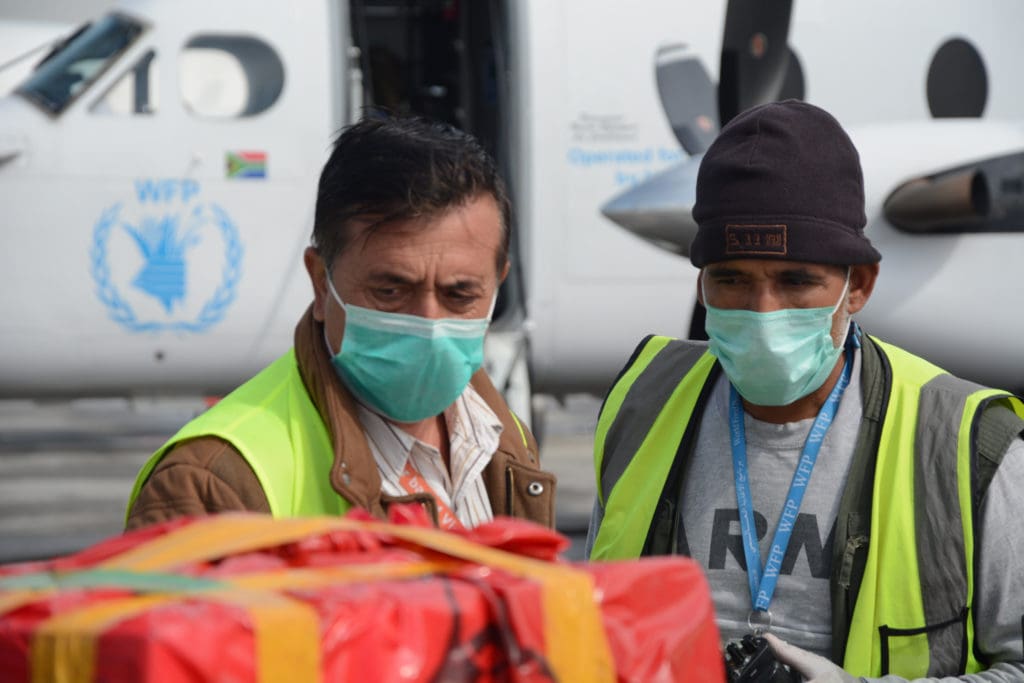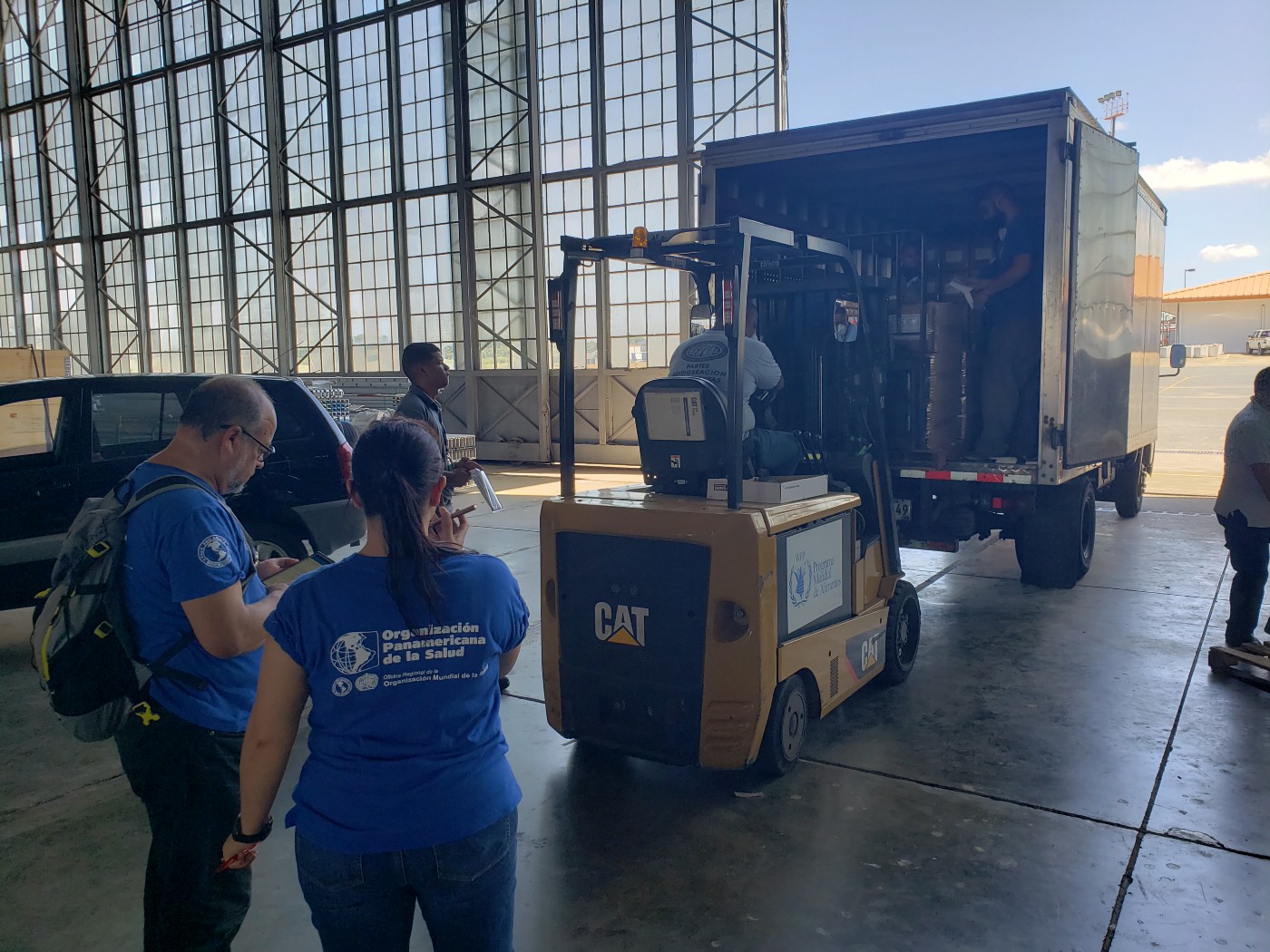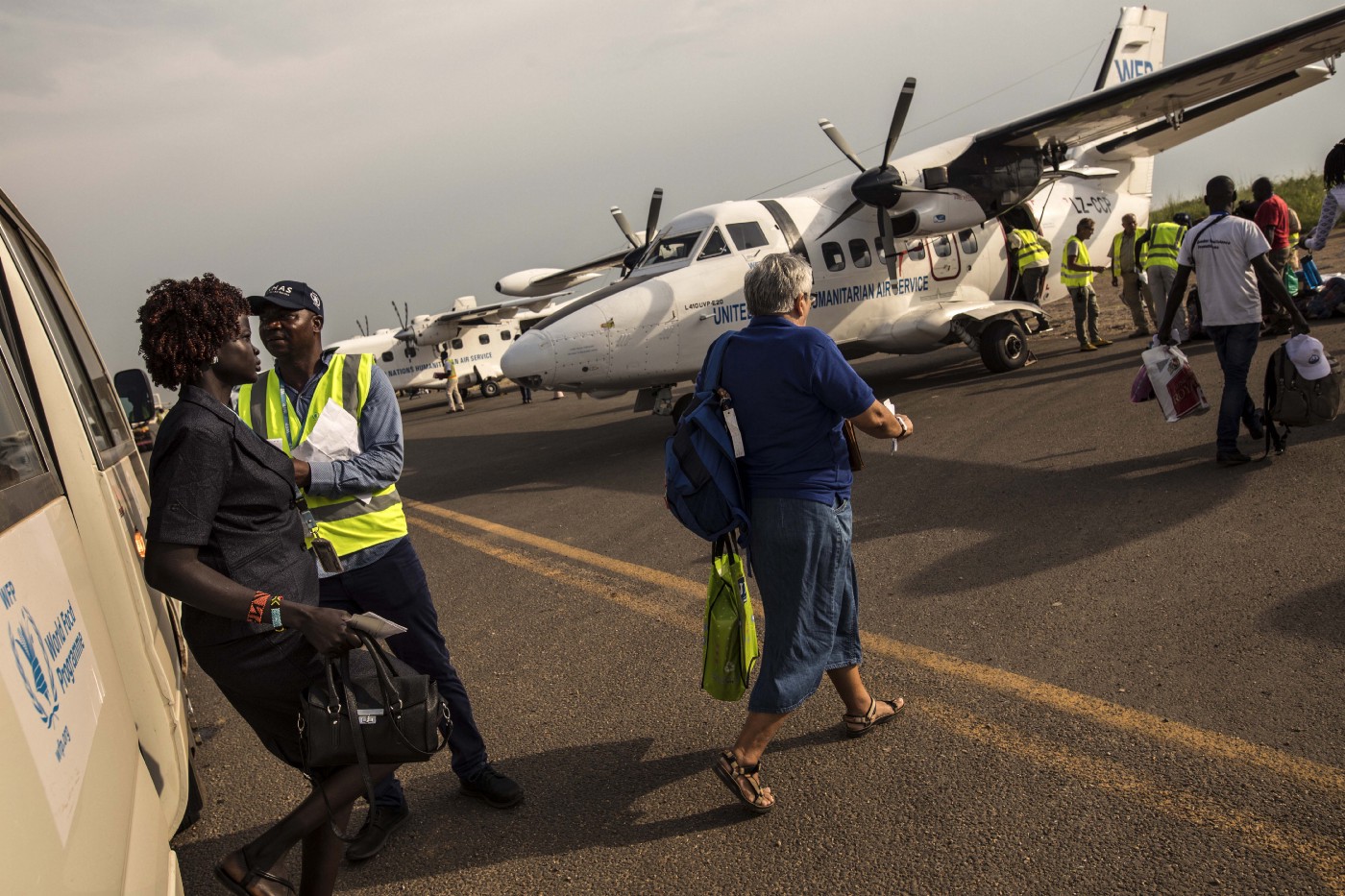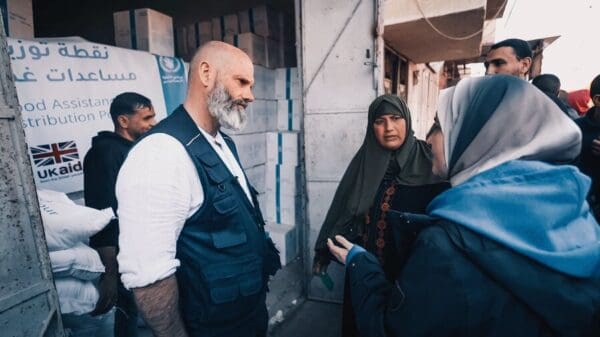During Pandemic, the Most Vulnerable Still Need Food. This Is How WFP Gets it To Them.

When supply chains break, the most vulnerable still need food to survive.
As the COVID-19 pandemic causes border closures, travel restrictions and supply chain complexities never faced before, the World Food Programme (WFP) must find ways to continue saving and changing the lives of the most vulnerable. These include the 11.6 million children who are no longer receiving WFP-supported school meals due to school closures — a number set to rise further in the coming days and weeks.
Logistics beyond food
As part of the Supply Chain Interagency Coordination Cell led by the World Health Organization (WHO), WFP plays an active role alongside other UN agencies, international organizations and NGOs to increase the efficiency and coherence of the COVID-19 response across the humanitarian sector. This includes pooling resources to have up-to-date information on logistics constraints, flagging disruptions to ongoing development programs, and making better decisions collectively.

The UN Humanitarian Response Depot in Panama sends protective gear to South American countries.
One of the goals of the coordination cell is to provide visibility on the demand of critical items for the COVID-19 response: personal protective equipment such as gloves, masks and coverall gowns, as well as lab diagnostic and clinical equipment.
As a response to the increasing demand for these critical items, the WFP-managed United Nations Humanitarian Response Depot (UNHRD) has supported partners in the dispatch of more than 85 consignments to 74 countries since January 25. These shipments included $1.4 million worth of personal protection items, Interagency Emergency Health Kits, anesthesia kits, sprayers, stretchers, thermometers, body bags and water purification supplies, as well as logistics support equipment.
Depending on the availability of funding, WFP plans to set up additional humanitarian hubs in China, Europe, the Middle East, Asia, Latin America and Africa to rapidly mobilize operational support equipment such as temporary storage facilities, generators and ambulances. These will augment existing UNHRD capacity and infrastructure, enabling humanitarian cargo to be rapidly delivered where needed most.
Preparedness — taken to the next level
To prepare for emergencies such as earthquakes, cyclones or tsunamis, WFP regularly procures food commodities in advance and stores them in strategic locations. This reduces delivery lead-time and means food can be bought in more favorable market conditions.
During this time of global emergency, WFP will reinforce inventories across its 14 strategically located hubs, to be ready to distribute food when and where needed.
For those countries deemed more vulnerable and at higher risk of suffering from breaks in supply chains, WFP will purchase and store three months’ worth of food to ensure the most vulnerable do not lose their lifesaving assistance.
Maintaining supply corridors despite closed borders
Movement restrictions pose a big challenge for vital operations in some of the most vulnerable countries across the world.
“For a landlocked country such as South Sudan, it is absolutely critical that supply corridors for humanitarian assistance remain open for as long as possible,” says Matthew Hollingworth, WFP country director for South Sudan. “We are racing to deliver food and other items to be prepositioned before the seasonal rains, which may come early this year, making much of the country inaccessible as rains wash away roads and trails. If we can’t source and transport commodities through neighbouring countries, this effort will fail, making the lives of over five million people all the more precarious.”
To minimize the impact of restrictions increasingly being imposed by governments, WFP works closely with local authorities to ensure that cargos of food and other essential items can continue to make their way to their final destinations.
Examples of this include prioritizing cargo and fast-tracking customs clearance for humanitarian and health response, utilizing strategic storage locations to reduce congestion at points of entry, and putting in place procedures that allow for safe handling in a COVID-19 context.
And if all fails, we fly
WFP’s first priority is to enable its commercial partners to continue operations. But with increasing interruptions to air, train, overseas and overland travel, WFP stands ready to step up where needed.
If required, we will secure dedicated strategic aviation services and charter dedicated vessels and overland fleet to ensure the movement of goods where normal commercial traffic can no longer go. Through the United Nations Humanitarian Air Service (UNHAS), WFP manages permanent air services covering 19 countries and is ready to activate aviation services to ensure food and other lifesaving essentials continue to reach those in need.

Passengers boarding an UNHAS ET410 aircraft in Juba International Airport, South Sudan.
Safety first
As governments put in place measures to protect the health of their citizens, WFP in all its operations is stepping up precautions to reduce any possible risk of infection to the people we serve, partners or staff.
Alongside measures adopted at distribution sites, including social distancing and handwashing, UNHAS is taking steps to protect the health of staff and passengers and, in turn, the people we serve. These include protocols for the disinfection of aircraft, making hand sanitizers available for staff and passengers; passenger-screening based on symptoms and temperature, and the provision of protective personal equipment to staff.
Failure is not an option
Nearly 90 million people depend on WFP assistance for their survival. Despite the daily new challenges impacting global supply chains, WFP will continue to do what we do best: deliver to those in need.
*This post was written by Selina Chan and originally appeared on WFP Insights.




